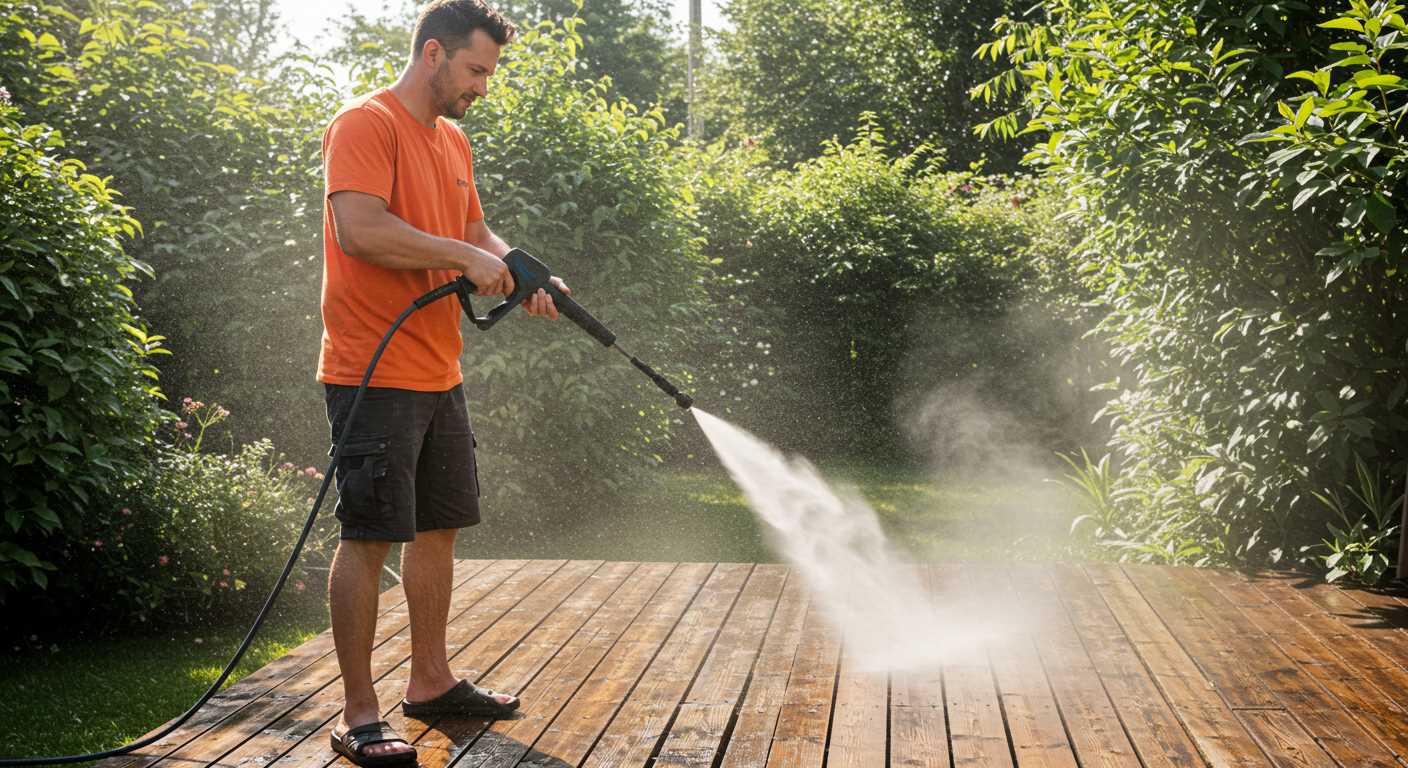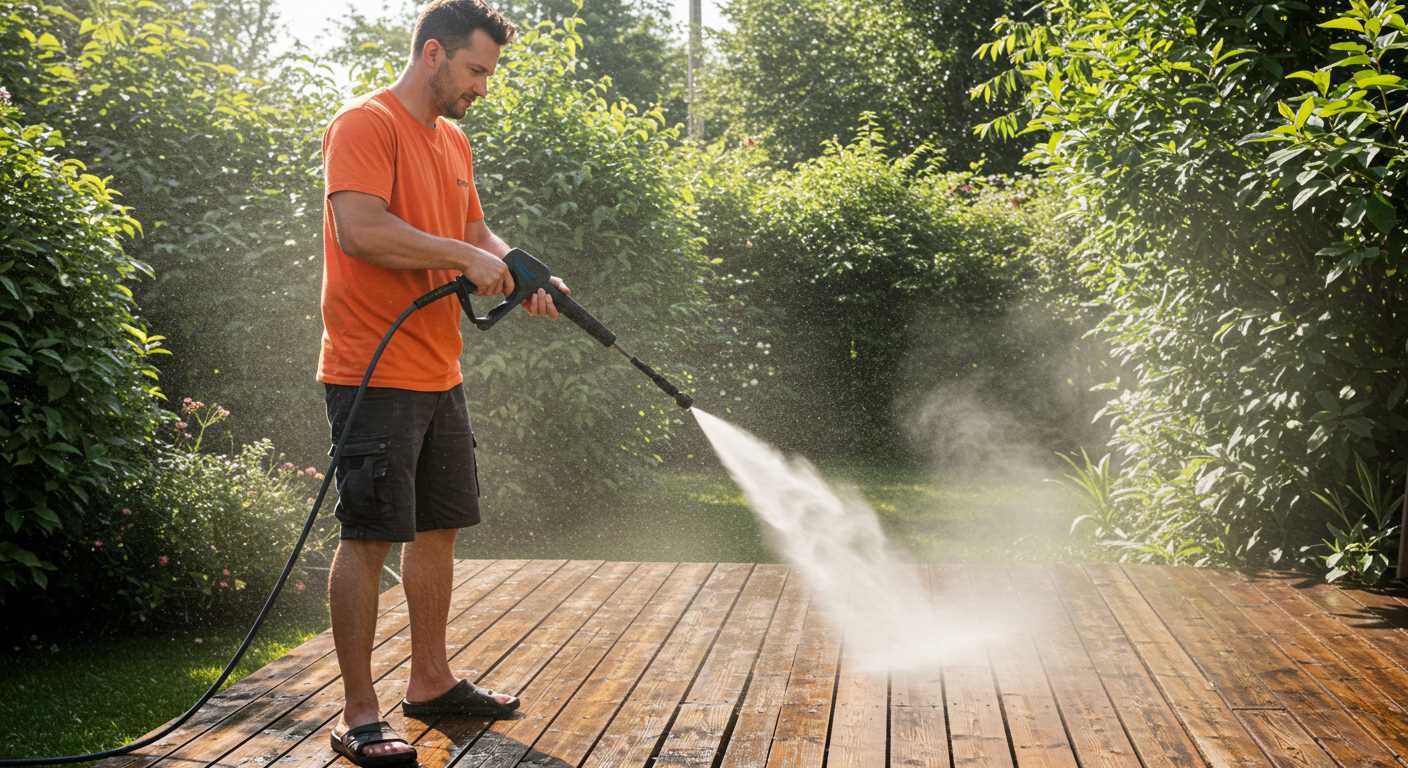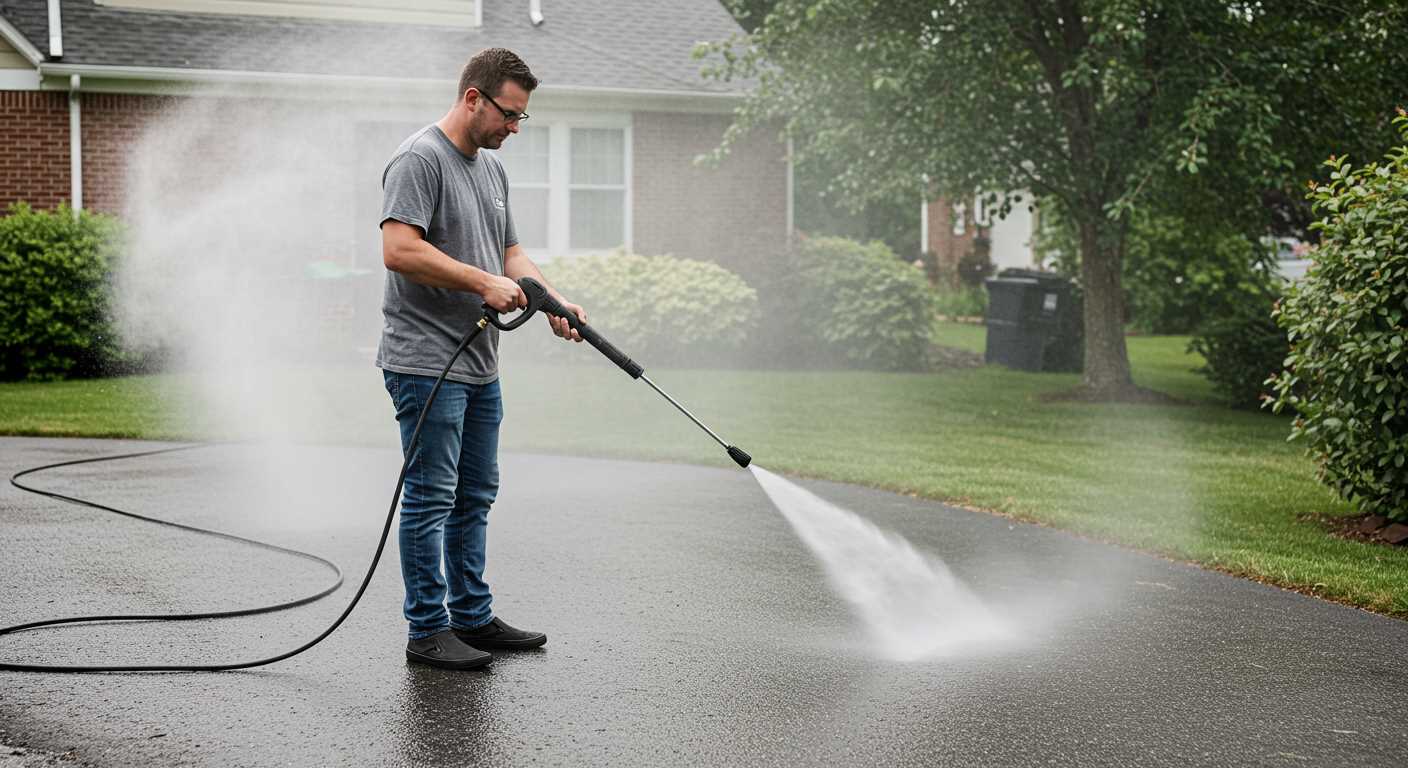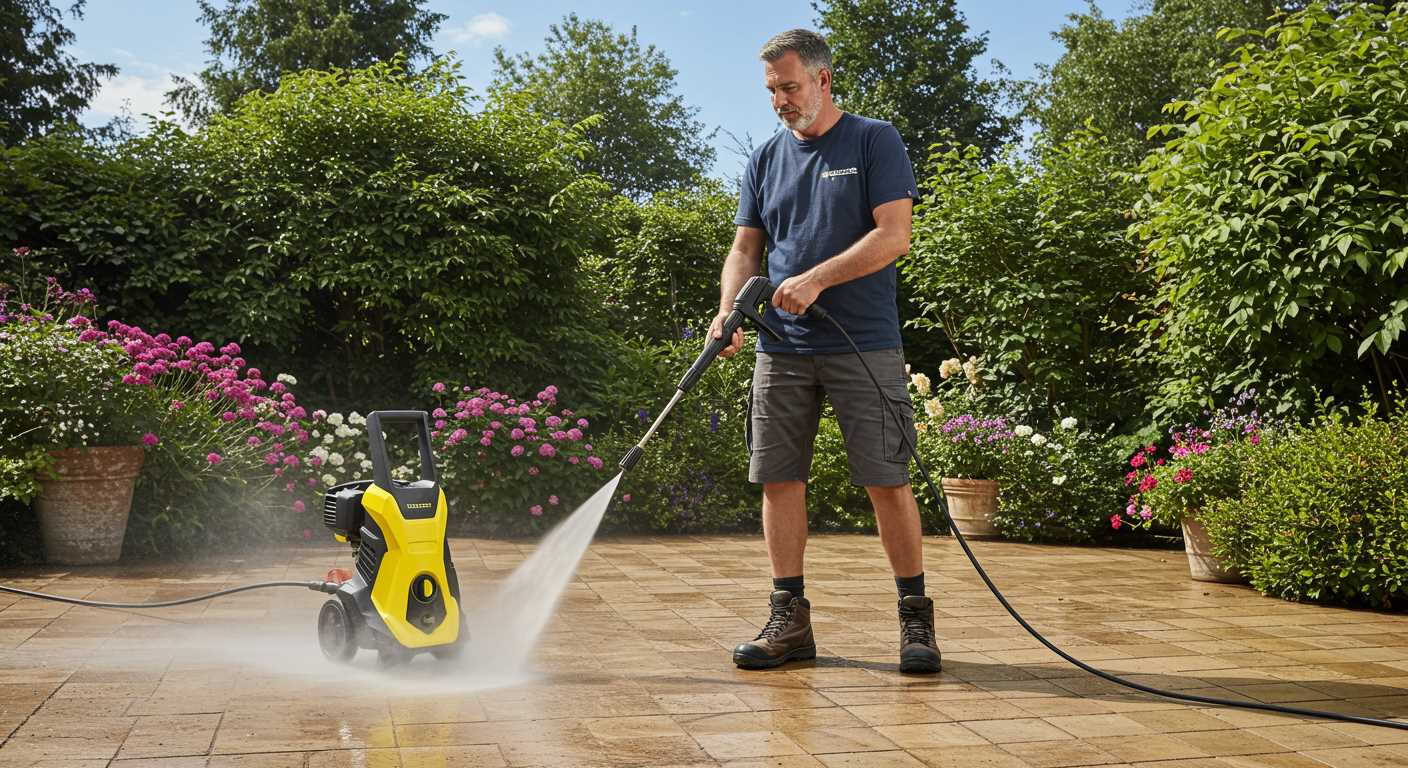




Start by checking the water supply. Insufficient flow can lead to erratic behaviour in your cleaning machine. Ensure the hose is free of kinks and the inlet filter isn’t clogged. A steady stream is crucial for consistent performance.
Next, examine the pump. If you’ve noticed the machine cycling, it might be due to air trapped within the system. Bleed the air from the pump by running it without the nozzle for a short period. This simple step can often resolve the issue, allowing for smoother operation.
Another common culprit is the nozzle. A blocked or worn nozzle can cause irregular pressure, leading to that frustrating on-and-off cycling. Inspect it closely; if you see debris, clean it out or consider replacing it if the wear is significant. A well-conditioned nozzle can make all the difference.
Additionally, look into the unloader valve. This component regulates the pressure within the system, and if it’s malfunctioning, it can lead to cycling problems. A quick adjustment or replacement of the valve can often restore proper function. I once had a client who experienced this issue; after a simple fix, they were back to cleaning efficiently in no time.
Lastly, check your detergent settings. If you’re using detergent, ensure the injector isn’t blocked. A malfunction here can also contribute to pressure fluctuations. Maintaining these components is key to prolonging the life of your equipment and ensuring it operates as intended.
Addressing Unwanted Cycling Issues
Inspect the inlet filter regularly. A clogged filter can restrict water flow, causing the motor to cycle. I remember a time when a friend’s unit kept turning on and off. After checking the filter, we discovered it was nearly blocked with debris. A quick clean restored normal operation.
Check the Unloader Valve
The unloader valve plays a pivotal role in maintaining consistent pressure. If it malfunctions, the system can quickly lose pressure and trigger cycling. I had a situation where the valve was stuck due to grime buildup. Cleaning it thoroughly solved the issue, allowing for smooth operation without interruptions.
Evaluate the Hose and Connections
Inspect all hoses and connections for leaks or kinks. A compromised hose can reduce water flow, causing the motor to work harder than necessary. I encountered a similar problem where a small crack in the hose led to significant pressure fluctuations. Replacing the hose made a noticeable difference in performance.
Regular maintenance is key. Keeping components clean and well-maintained will prolong the life of the equipment and ensure it operates smoothly. In my experience, small preventative measures can save a lot of frustration down the line.
Identifying Pressure Washer Cycling Symptoms
Listen for an irregular pulsing sound while operating your device. This can indicate fluctuations in water flow or pressure, often leading to performance issues. Pay attention to the water stream; if you notice a choppy or inconsistent spray, it’s a sign something isn’t quite right. In my experience, this erratic flow often correlates with a malfunctioning unloader valve or clogged filters.
Another key symptom is fluctuating pressure readings on the gauge. A steady reading is what you want; if you see it dropping and then spiking, it suggests that the pump is struggling to maintain consistent output. I recall a situation where a friend’s unit was churning out water like a rollercoaster, and it turned out to be a simple air leak in the inlet line.
Check for excessive vibrations during operation. A well-functioning machine should run smoothly. If it shakes or rattles, there might be a mechanical issue, such as loose components or a misaligned pump. I once had a unit that vibrated like a jackhammer, and tightening the bolts made all the difference.
Observe the pressure relief valve; if you see water spraying from it, this suggests that the pressure is too high, which can lead to cycling. I’ve seen numerous units underperform due to this overlooked symptom, often fixed with a simple adjustment.
Lastly, don’t ignore any unusual overheating. If the motor is running excessively hot, it could be struggling to keep up with demand, a sure sign of underlying issues. I’ve had to replace motors due to neglecting this warning sign. Keep an eye on the temperature gauge; it’s your first line of defence.
Checking Water Supply Issues
First, ensure a steady flow of water to the unit. A low water supply can lead to inconsistent performance. Here’s a quick checklist to troubleshoot water supply concerns:
- Inspect the Hose: Look for kinks or blockages. A damaged hose can restrict flow significantly.
- Check the Inlet Filter: Many models have a filter at the water inlet. Clean it regularly to prevent debris buildup.
- Verify Water Source: Make sure your tap is fully open. Sometimes, a partially closed valve can reduce pressure.
- Examine Supply Line: If you’re using a long hose, ensure it’s rated for high flow. Older or cheaper hoses may not deliver adequate water.
In my experience, I once encountered a persistent issue with a unit that kept losing pressure. After checking the usual suspects, I discovered the inlet filter was clogged with sediment. A quick clean solved the issue, revealing how easily minor obstructions can lead to major headaches.
Next, consider the water temperature. Most models operate best with cold water. If you’re using hot water or your supply is too warm, it can affect performance. Always refer to the manufacturer’s specifications.
Lastly, ensure that your water supply is not affected by environmental factors. If you’re drawing from a rainwater tank or a well, fluctuations in water levels can cause issues. A consistent water level is key for reliable operation.
Inspecting the Pressure Washer Pump
Begin your examination of the pump by disconnecting the water inlet and outlet hoses. Look for any visible cracks or signs of wear on the pump housing. A common issue that can lead to performance problems is a damaged O-ring. Replace it if it appears worn or brittle. This small component can often be the culprit behind leaks that affect functionality.
Checking for Blockages
Next, inspect the inlet filter and any screens. A clogged filter can restrict water flow, leading to inconsistent operation. Clean it thoroughly or replace it if it’s beyond recovery. As I’ve seen in my years of testing, even the smallest debris can cause significant disruptions. I recall one instance where a simple blockage was the root cause of a unit’s erratic behaviour, which left the owner frustrated for weeks.
Testing Pump Pressure
Use a pressure gauge to check the pump’s output. This reading should align with the specifications detailed in your manual. If the gauge indicates low pressure, it could mean wear in the internal components. I’ve witnessed pumps that appeared fine externally but were internally damaged, leading to a lack of power. If the readings are off, consider a rebuild or replacement of the pump for optimal performance.
Cleaning or Replacing the Filter
Regularly cleaning or replacing the filter can significantly enhance the performance of your high-pressure equipment. A clogged filter restricts water flow, leading to an inconsistent operation that can be frustrating.
Here’s a straightforward approach:
- Locate the Filter: Typically found near the water inlet, this component is crucial for protecting the internal mechanisms from debris.
- Inspect the Filter: Check for any visible blockages or dirt accumulation. If it appears dirty, it’s time for a clean or replacement.
- Cleaning Process: Remove the filter and rinse it under warm water. Use a soft brush to eliminate stubborn dirt. Allow it to dry completely before reinstalling.
- Replacement: If cleaning doesn’t resolve issues, replacing the filter is advisable. Make sure to use a compatible filter for optimal performance.
In my experience, neglecting the filter often leads to more significant issues down the line. I once had a client whose unit was cycling erratically, and the culprit was a simple clogged filter. Once replaced, the machine operated smoothly again.
For those interested in versatile options, consider exploring the pressure washer for cyclocross, which can handle various cleaning tasks effectively.
Maintaining the filter ensures your machine runs at its best, preventing unnecessary wear and tear on other components.
Examining the Unloader Valve Functionality
The unloader valve is a critical component in managing water flow and pressure. If you’re experiencing an issue, the first step is to check whether the valve is functioning correctly. In my experience, many problems stem from a malfunctioning unloader valve. A common sign is inconsistent water output, which can lead to unwanted fluctuations during operation.
To inspect the unloader valve, follow these steps:
| Step | Description |
|---|---|
| 1 | Locate the unloader valve, typically found near the pump. |
| 2 | Check for any visible damage or debris. Clean the valve thoroughly. |
| 3 | Test the valve by running the machine at low pressure. Observe if it opens and closes as expected. |
| 4 | If it sticks or fails to open, consider disassembling it for a deeper inspection. |
| 5 | Replace any worn seals or components. Ensure everything is reassembled tightly. |
I’ve often found that a simple cleaning can resolve many issues, but if problems persist, replacing the unloader valve may be necessary. Keep an eye on the adjustment settings; sometimes, recalibrating them can restore proper functionality. Regular maintenance of this part can save you from frustrations during cleaning tasks.
Assessing Hose and Nozzle Conditions
Inspect the hose and nozzle for signs of wear or damage. A compromised hose can lead to inconsistent water flow, causing pressure fluctuations. Look for kinks, cracks, or abrasions. Any visible damage can severely impact performance. I remember a case where a seemingly minor kink in the hose caused the unit to cycle erratically, frustrating the user. Replacing that hose resolved the issue immediately.
Evaluating Hose Integrity
Run your fingers along the entire length of the hose. If you feel any rough spots or bulges, it’s time for a replacement. Check the fittings at both ends for leaks. Even a small leak can introduce air into the system, resulting in pressure inconsistencies. I once had a client who was convinced their motor was failing, but a simple hose replacement solved their problems.
Examining Nozzle Condition
The nozzle plays a critical role in maintaining the correct flow rate. Inspect it for clogs or wear. A clogged nozzle can restrict water flow, leading to pressure issues. Clean it thoroughly; I often use a thin wire to dislodge debris. If the nozzle shows signs of excessive wear, such as a wider opening than usual, consider replacing it. A worn nozzle can drastically alter the spray pattern and pressure output. I’ve seen many users overlook this component, only to find that a new nozzle restored their unit’s efficiency.
Adjusting Pressure Settings Properly
Begin with the manufacturer’s specifications for your unit; they’re invaluable for setting the right force of water. I’ve often noticed that users overlook these guidelines, thinking they know better. Trust me, starting at the recommended setting can save you a lot of trouble.
Next, while operating the device, observe the results. If the stream feels weak or inconsistent, incrementally increase the setting. I recall a time when I was helping a friend who struggled to clean his patio. We adjusted the output gradually, and he was amazed at the difference. A little tweak can turn a frustrating job into a breeze.
Keep in mind the type of task at hand. For delicate surfaces, lower settings are advisable to prevent damage. Conversely, stubborn grime on concrete may require a more aggressive approach. I once had a particularly grimy driveway that resisted even the highest force. It took some trial and error to find the sweet spot, but it was worth it when the results finally showed.
Always monitor the gauge during operation. Fluctuations may indicate an underlying issue. If you notice the readings bouncing around, it could signal that the adjustments aren’t holding steady, which could lead to further complications. I learned this the hard way during a job where I ignored the gauge; it ended up costing me extra time and effort.
Finally, after making adjustments, take a moment to test the unit on a small area before tackling the entire job. This small step can prevent larger issues down the line. I often recommend this approach to anyone new to using these machines. It allows you to gauge the effectiveness without committing to a full area. The satisfaction of seeing those initial results can motivate you to continue with confidence.
Consulting Professional Repair Services
When all troubleshooting measures have been exhausted and issues persist, seeking expert assistance becomes a pragmatic decision. Relying on seasoned technicians can save time and money, particularly when complex repairs are necessary. I recall a time when a seemingly simple problem turned into a major hassle. After trying to rectify the situation myself, I finally called in a repair service that specialised in high-pressure cleaning systems. They not only resolved the issue quickly but also provided valuable insights into maintenance practices that I had overlooked.
The Benefits of Professional Expertise
Utilising professional repair services offers a wealth of advantages. These experts possess extensive knowledge and often have access to specialised tools that can diagnose problems beyond what a standard user can detect. For instance, during one repair, the technician discovered a malfunctioning component in the pump that I would never have pinpointed on my own. Their thorough approach ensured that I avoided future breakdowns and optimised the longevity of my equipment.
Choosing the Right Service
Not all services are created equal. Look for providers with strong reputations and positive customer feedback. A simple online search can yield reviews and ratings that guide you towards reliable options. Additionally, inquire about their experience with your specific model. I once encountered a technician who was unfamiliar with my equipment, resulting in a longer repair time and unnecessary costs. Sticking to specialists who understand your model can drastically improve the repair experience.
For those interested in exploring more about technology, check out this link: are digital cameras better than dslr.
FAQ:
What causes a pressure washer to cycle frequently?
Pressure washer cycling often occurs due to several factors. One common reason is a faulty unloader valve, which regulates water flow and pressure. If this valve is malfunctioning, it can cause the pump to turn on and off repeatedly. Another potential cause is air in the system, which can happen if the washer has been improperly bled or if there are leaks in the hoses or connections. Additionally, a dirty filter or clogged nozzle can restrict water flow, leading to cycling as the machine struggles to maintain pressure.
How can I stop my pressure washer from cycling?
To stop your pressure washer from cycling, first inspect the unloader valve for any signs of damage or wear. If it’s faulty, replacing it is often necessary. Next, check for air leaks in the hoses and ensure all connections are tight. Bleeding the system can also help eliminate trapped air, which can be done by running the washer without a nozzle attached until a steady stream of water flows. Lastly, clean or replace the filter and nozzle to ensure proper water flow.
Is it safe to use a pressure washer that is cycling?
Using a pressure washer that is cycling is not advisable. The cycling can indicate underlying issues that may worsen over time. Continuing to use the machine under these conditions can lead to further damage and potentially hazardous situations, such as the risk of the machine overheating. It’s best to address the cause of the cycling before using the pressure washer again to ensure safety and proper functionality.
What maintenance can I perform to prevent pressure washer cycling?
Regular maintenance can significantly reduce the likelihood of pressure washer cycling. Start by regularly checking and cleaning the unloader valve, ensuring it operates smoothly. Inspect hoses for wear and tear, replacing them if necessary to prevent air leaks. Clean filters and nozzles routinely to prevent clogs. Additionally, ensure that the pressure washer is properly bled before use, as this helps remove any air that could cause cycling issues.
Can using the wrong nozzle cause my pressure washer to cycle?
Yes, using the incorrect nozzle can lead to pressure washer cycling. Each nozzle is designed for specific pressure levels and flow rates. If a nozzle with too small an opening is used, it can restrict water flow, causing the pump to cycle as it attempts to maintain pressure. To prevent this, always use the nozzle recommended by the manufacturer for your specific pressure washer model and application.
What causes a pressure washer to cycle frequently?
Frequent cycling of a pressure washer can be attributed to several factors. One of the primary causes is a malfunctioning unloader valve. This valve regulates the pressure and flow of water in the system. If it is stuck or damaged, it may not maintain consistent pressure, leading to the motor turning on and off repeatedly. Additionally, air leaks in the inlet or outlet hoses can disrupt the pressure balance, causing the washer to cycle. Other potential issues include low water supply or clogged filters, which can affect the overall performance of the washer. Regular maintenance and inspection can help identify these problems early.
How can I fix the cycling issue in my pressure washer?
To resolve the cycling issue in your pressure washer, first check the unloader valve. Ensure it is functioning properly and not clogged or damaged. If necessary, clean or replace it. Next, inspect the hoses for any signs of air leaks or blockages; replacing any damaged hoses can improve performance. Ensure that the water supply is adequate and that filters are clean, as blockages can prevent proper water flow. Additionally, make sure the pressure settings are correctly adjusted according to the manufacturer’s specifications. If these steps do not solve the problem, consulting the owner’s manual or contacting a professional for further assistance may be the best course of action.






.jpg)


